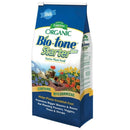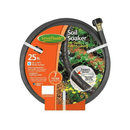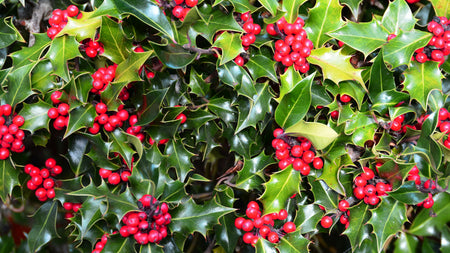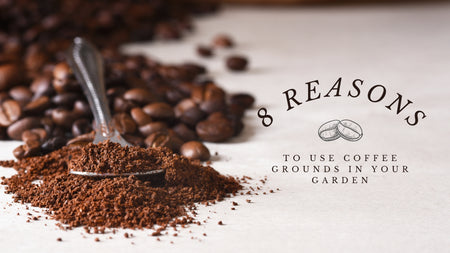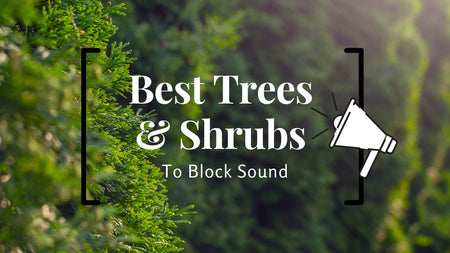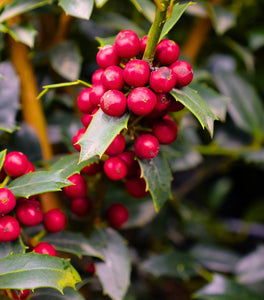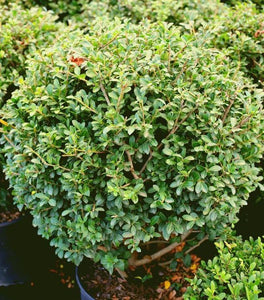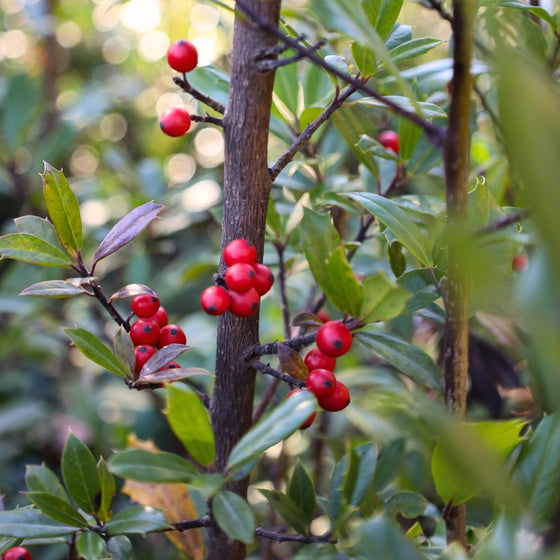
Images Depict Mature Plants
Foster Holly Tree for Sale Online
Foster Holly (Ilex Opaca x attenuata 'Fosteri'), also known as Foster's No. 2 Holly, is a compact evergreen tree with bright red berries and glossy green foliage. Foster Holly trees add year-round interest to any landscape and their fruit attracts birds well into winter.
The Foster Holly's glossy dark green leaves pair beautifully with the tree's small white flowers that bloom in the spring. The flowers are insignificant though in comparison the the plants' gorgeous red fruits that grow in the winter.
Foster Holly is extremely rare in the way that their female plants produce fruit without fertilization from a male pollinator. Where most all fruiting plants require a male present to produce fruits. the Foster Holly is an independent fruiting tree.
These impressive Holly trees have a relatively moderate growth rate and can reach an average of 15 feet tall and 12 feet wide at maturity. Ideal conditions for these winter interest trees include full sun and well draining soils. Hollies are fairly hardy though and will tolerate some partial shade.
When planted in dense rows, hollies make excellent windbreakers. Holly Trees are well-loved for their ornamental foliage and make beautiful wreaths at Christmas. These stunning trees are also excellent for use as privacy screens and hedges, but also make wonderful specimen trees.
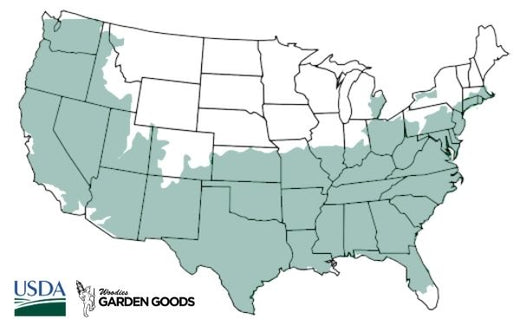
| Hardiness Zone: | 6-9 |
|---|---|
| Mature Height: | 15 to 25 Feet |
| Mature Width: | 8 to 12 Feet |
| Sunlight: | Full sun to part shade |
| Foliage Color: | Dark green |
| Growth Form: | Upright pyramidal |
| Soil Conditions: | Very tolerant of most soil conditions |
How to Care for Foster Holly
Be sure to read our planting instructions to ensure a healthy and happy plant for years to come!
HOW TO PLANT FOSTER HOLLY TREES
Never plant Foster Holly Trees deeper than originally planted in the pot. As a rule we always say that before you mulch you should still be able to see the soil from the original pot. Planting to deep can cause rotting of the stem and death to the tree. Fosteri Holly are moderately drought tolerant, however they grow very slow without adequate water. Staking young trees is recommended to minimize the stress on the stem from winds blowing the tree. When tying trees to stakes remember the tree will continue to grow. Loosely tie the tree with several twist ties to allow for growth. Check trees every three months and loosen as needed. If this is not done, the twist tie will grow into the tree causing injury. A pro tip that we can offer is to use a short length of old garden hose and run the tie wire through the hose. this will protect the trunk of the tree from being damaged by the tie wire. The one question that comes up often when talking to customers is “when is the best time to plant trees”? For the most part, container trees can be planted year around, provided the ground isn’t frozen. Below Virginia many nurseries and Christmas tree growers field plant year around, weather permitting. When planting a potted tree, remember the only water source the tree has is its small root ball, and all the water the tree uses must come from them until new roots can grow into the surrounding soil. New trees should be watered twice weekly (minimum), under hot drier conditions, possibly more. Care should be taken not to over water. More trees die from over watering than under.
HOW TO FERTILIZE FOSTER HOLLY
We recommend when planting your Foster's No. 2 Holly Trees to use Bio-tone starter fertilizer by Espoma. We have trialed many so called “starter fertilizers” over the years and have come to rely on Bio-tone exclusively for our own use. Simply mix the recommended amount of Bio-tone into the back fill soil and water in generously when back filled. Bio-tone® Starter Plus is an all-natural plant food that is combined with a stronger concentration of beneficial bacteria along with both endo and ecto mycorrhizae. Basically the “good” fungus in Bio-tone colonizes on the growing roots of your newly planted plant and does not allow disease causing fungus to attack the new roots. It has also shown promise in stimulating the growth of the new roots which means quicker establishment for you plant. After establishment and during the following years we recommend Holly-tone used at the recommended rates. It is also organic and slow release which will feed your trees the proper amount of nutrients over a period of time rather than all at once which can burn the root tips and actually have the opposite effect of slowing down plant growth. It also will help to maintain the acid level in the soil that Foster Holly trees need to thrive.
HOW TO WATER FOSTER'S NO 2 HOLLY
To help your Foster Holly's roots to establish, apply 2-3 gallons of water for each inch of trunk in diameter several times a week. Do not add water if the root ball is saturated. Follow this schedule for three-six months depending on the USDA Zone you live in. Once established, apply 1 gallon a week to the rootball. You can discontinue irrigation once the deciduous trees in your area have dropped their leaves. You should try to moisten the soil 2-3 feet deep each time you irrigate. Depending on the soil condition, you may need more or less water. Clay for instance is more difficult to saturate and requires adding the water more slowly, while sandy soil absorbs water quickly. Keep this in mind when watering your newly planted tree. It is best to water you tree with a soaker hose not a sprinkler.










